

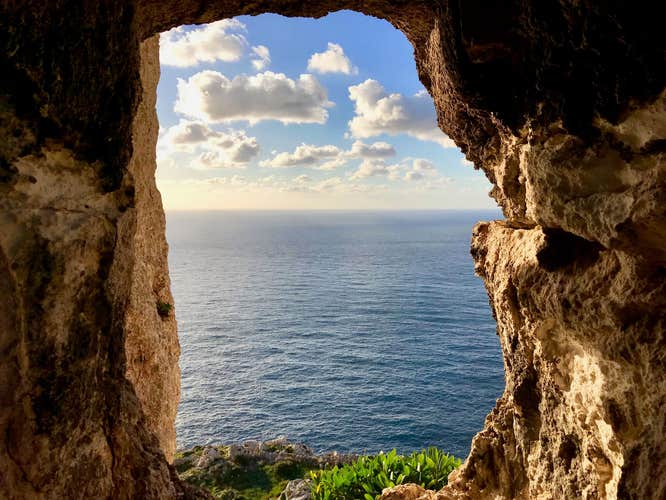

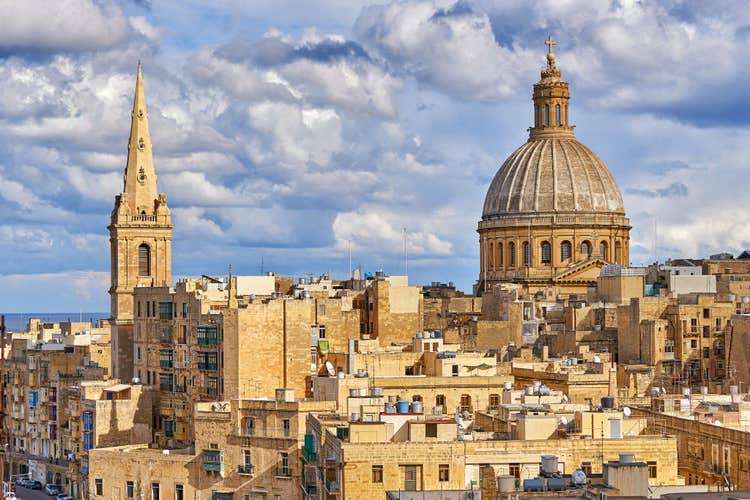
Dive into an unforgettable adventure with this guide to the best time to visit Malta. Explore the island’s weather patterns and climate, along with a detailed breakdown of each season. Find everything you need to know to experience Malta at its best.
Small but full of character, Malta packs a Mediterranean punch with far more charm than its size would suggest. That charm shines through Malta's wide selection of tours and activities, from exploring ancient ruins to sailing its stunning coastline. The island may be small, but the experiences it offers are anything but.
Knowing the best time to visit Malta is key to enjoying everything the island has to offer. From exploring renowned Malta museums and joining interactive cooking classes focused on Maltese cuisine, timing your trip ensures you experience the best Malta has to offer. Even when enjoying beach holidays in Malta, thoughtful planning enhances the experience.
This blog covers all the details on when these experiences shine brightest, the cheapest time to book flights to Malta, and more. Pair these insights with fully customizable Malta travel packages to plan a well-rounded holiday, making the most of each experience without the stress.
When To Visit Malta

Malta is often seen as a prime summer destination, famous for its beaches and crystal-clear waters. Beach holidays in Mellieha, renowned for Mellieha Bay, are considered ideal for relaxation, while coastal retreats in St. Julian’s offer a blend of seaside charm and vibrant nightlife.
However, the island is known to offer much more than a typical beach holiday. Malta’s rich history, ancient ruins, vibrant festivals, and unique cultural heritage provide a well-rounded experience that extends beyond its scenic coastlines.
Notable destinations include Valletta, a UNESCO World Heritage Site, the ancient temples of Hagar Qim and Mnajdra, the historic streets of Mdina, and the Three Cities, recognized for their maritime significance.
When deciding the best time to visit Malta, factors beyond weather and activities should be taken into account. The peak tourist season is associated with large crowds and higher costs. By considering these elements, a more enjoyable and personalized experience can be ensured.
When is Malta's peak season?
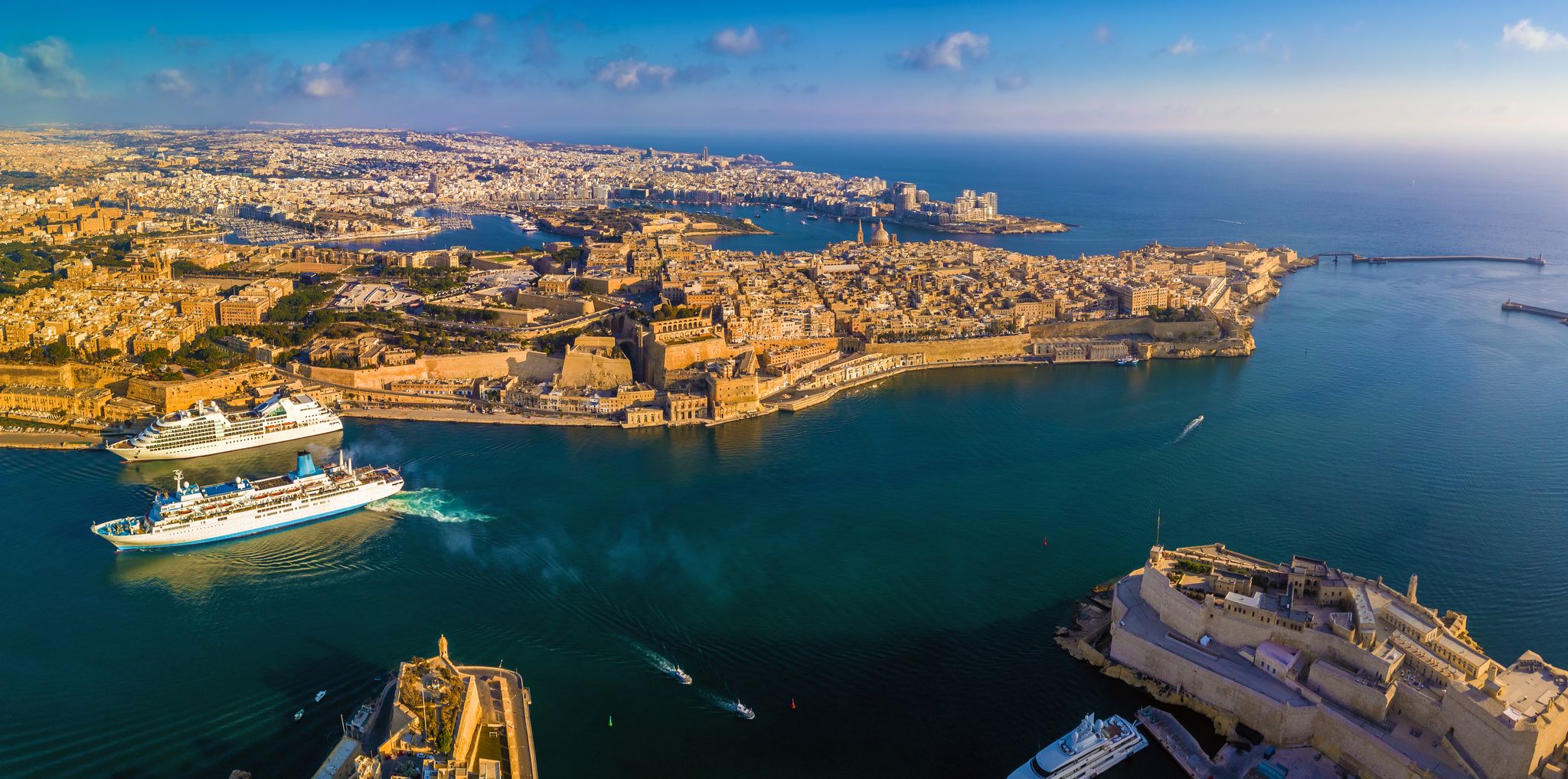
Malta's peak season spans from June to September, coinciding with the summer months. This period offers the longest days and the highest temperatures. The island is at its liveliest, with numerous festivals, events, and bustling beach scenes.
July and August are particularly popular for their consistent sunny weather and warm sea temperatures, perfect for swimming and sunbathing. However, expect larger crowds and higher prices for accommodations and flights during this time.
Is the shoulder season the cheapest time to visit Malta?

The cheapest time to visit Malta is during the winter months, but the shoulder seasons—spring (April to June) and autumn (late September to early November)—also offer affordable options.
While winter provides the lowest prices, the shoulder seasons feature pleasant weather and longer daylight hours, making outdoor activities and sightseeing more enjoyable.
Cheapest Time To Fly To Malta
The cheapest time to fly to Malta is typically in the winter, especially in January and February. Tourist demand is at its lowest, and airlines often offer reduced fares during these months to attract travelers.
To find the best deals, consider booking your flights well in advance, be flexible with your travel dates, and avoid peak holiday periods like Christmas and New Year's Eve.
When's the best time for sightseeing in Malta?

The best time to visit Malta is during the spring (April to June) and autumn (late September to early November) if your primary interest lies in exploring the country's rich history, stunning architecture, and scenic landscapes,
During these periods, the weather is pleasant, and the crowds are thinner, allowing you to enjoy the island's attractions without the summer heat and tourist influx.
What's the best season to visit Malta?

The best season to visit Malta, without a doubt, is during the summer. During this time, the country is at its peak with long, sunny days and warm sea temperatures. It's the best time for the beach, swimming, and other water sports.
What's the August shutdown in Malta?
Something to note when visiting Malta during summer is the country experiences a significant slowdown known locally as Santa Maria, which peaks on the public holiday on August 15th.

This period sees many small, family-run businesses, especially restaurants and service providers, temporarily close as locals take time off.
However, major attractions, larger entertainment venues, and tourist services remain operational to cater to the influx of visitors. This time is particularly busy with Italian tourists, so while some establishments shut down, it enhances the lively atmosphere across the island.
Despite the closures, this month remains the best time to visit Malta for its lively local culture and festivities.
Malta's Climate and Weather

With its Mediterranean climate, Malta experiences hot, dry summers and mild, wet winters, offering a balance of warmth and comfort. This island gem has an enticing climate that makes it a must-visit year-round, though some seasons bring unique experiences.
Knowing what to expect weather-wise can make a significant difference in how you plan your trip. Discover the best time to visit Malta and enjoy everything this beautiful island has to offer.
Figuring Out Malta's Weather Patterns
Before you pack your bags for Malta, it’s essential to get a grip on the island’s weather patterns. A key factor in figuring out the best time to visit Malta is the weather you prefer.
Average Temperatures in Malta
Malta's climate is characterized by hot, dry summers and mild, wet winters, with average temperatures peaking in July and August (around 80 F or 27 C).
Spring (March to May)
Spring in Malta is delightful. Average temperatures rise from around 57 F (13.5 C) in March to 67 F (19.5 C) by May. Rainfall decreases, and the island starts to dry out from the winter showers. Maximum temperatures in May can reach 77 F (25 C), making it a pleasant time to explore.
Summer (June to September)
Summer in Malta is hot and dry. Average temperatures range from 75 F (24 C) in June to 76 F (24.5 C) in September. During the peak of summer, maximum temperatures can climb to 90 F (32 C) in July and August. The sea is warm, ideal for swimming and other water activities.
Autumn (October to November)
Autumn brings a gentle transition to cooler weather. Average temperatures range from 76 F (24.5 C) in October to 63.5 F (17.5 C) in November. Rainfall picks up in November, though the weather remains comfortable. Minimum temperatures in November can drop to 57 F (14 C) at night.
Winter (December to February)
Winter in Malta is mild. Average temperatures hover around 57 F (14 C) in December. Daytime maximum temperatures can reach 63 F (17 C), while nighttime minimum temperatures rarely fall below 48 F (9 C). This season is the wettest, with most of the rainfall occurring from December to February.
What To Expect in Malta in Terms of Sunshine and Rainfall
If sunshine is what you crave, Malta won’t disappoint. The island enjoys about 3,000 hours of sunshine annually. During the peak summer months, you can expect up to 12 hours of sunshine each day. Even in winter, there are still around 5 to 6 hours of sunshine daily.
Rainfall in Malta, on the other hand, is relatively low. The majority of it occurs in the winter months. Annual precipitation averages around 600 mm, with December and January being the wettest months. The summer months are particularly dry, often experiencing little to no rain.
The Best Time To Visit Malta for Sun

After all that's been discussed about Malta's weather patterns, sunshine, and rainfall, it's clear that the best time to visit Malta for sun is from June to September. During these months, the island experiences long, sunny days and minimal rainfall, making it ideal for beach activities and outdoor exploration.
July and August, in particular, offer the most consistent sunny weather and warm sea temperatures, perfect for swimming and sunbathing.
A Closer Look Into the Seasons in Malta

Malta's charm is not just in its picturesque landscapes and historical sites but also in its distinct seasonal variations that offer different experiences throughout the year.
Understanding these seasons can help you pick the best time to visit Malta. Whether you're after sunshine, cultural festivals, or budget-friendly travel, there's a perfect season for you.
Spring in Malta
From March to May, the island comes alive with vibrant wildflowers, turning fields and meadows into stunning landscapes. This is when Malta's natural beauty is at its best, perfect for outdoor adventures.
In Valletta, the capital, the cultural scene thrives with lively festivals and events that highlight local heritage, all without the summer crowds. The sea starts to warm up, inviting early swimmers to enjoy its refreshing waters.
It's also the best time to visit the Blue Grotto in Malta, a breathtaking sea cave known for its dazzling blue waters and unique rock formations. A Blue Grotto boat tour from Sorrento offers the best way to experience its beauty up close.
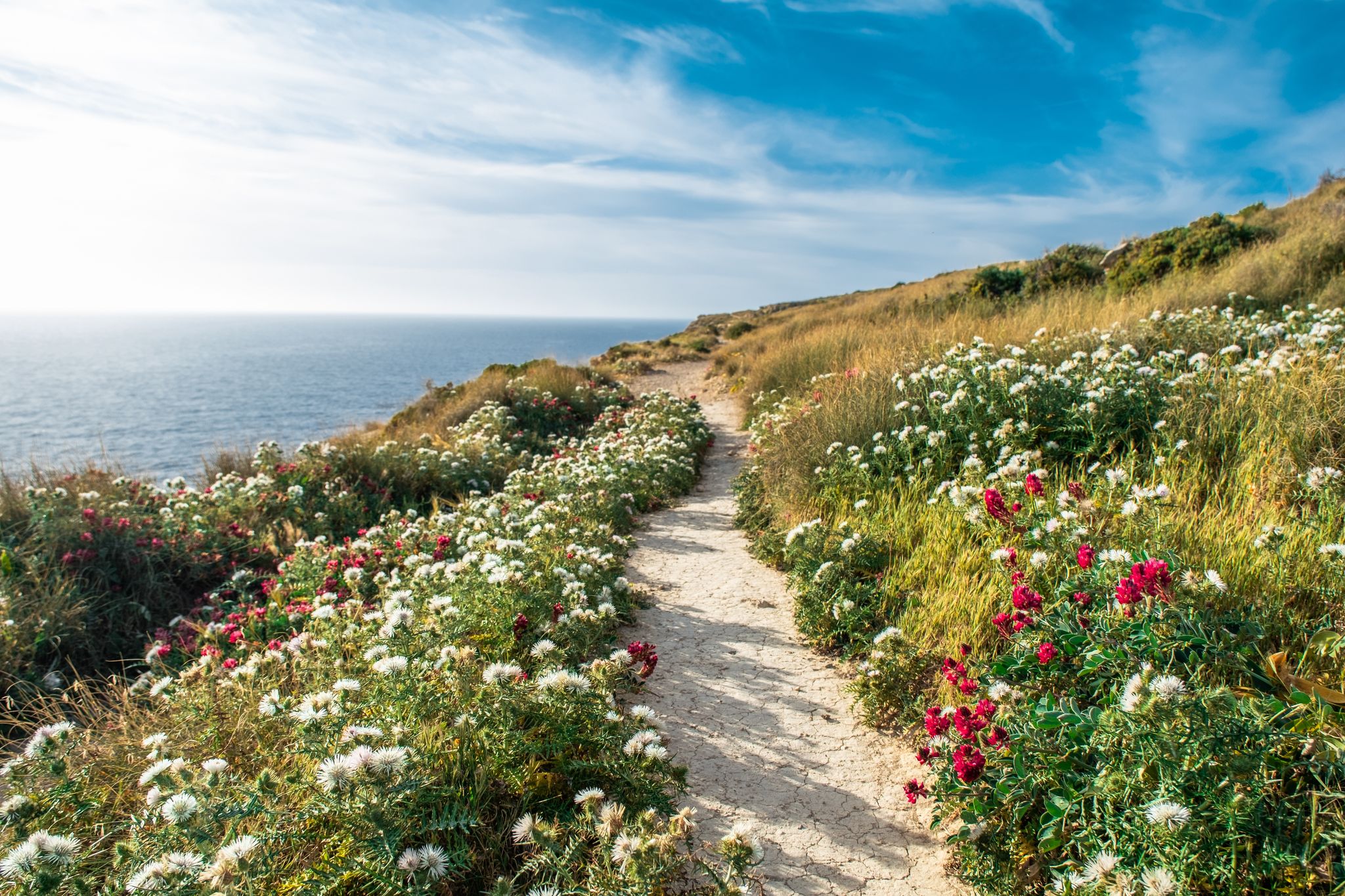
Top Places To Visit in Malta During Spring
City breaks to Valletta are perfect during this time, with pleasant temperatures ideal for sightseeing and outdoor cafes. A 5-day Valletta city break is the perfect opportunity to experience the best of Malta during the spring season.
Other best places to visit include the tranquil Mdina, also known as the Silent City, and the scenic Dingli Cliff and the Blue Grotto, which are also must-see spots during this season.
Must-Attend Events in Malta’s Springtime
Spring in Malta brings vibrant events, including Easter processions and village feasts, offering a glimpse into local traditions. The Malta International Fireworks Festival in April dazzles with pyrotechnic displays over the Grand Harbour, making spring an ideal time to visit.
Best Things To See and Do in Malta in Spring
Spring is the ideal season for enjoying outdoor activities in Malta. With pleasant temperatures and lush landscapes, it's perfect for hiking along the scenic coastal cliffs of Dingli or cycling through the lush greenery of Buskett Gardens, both of which come alive in spring.
You can also explore Malta's historical sites, such as the ancient temples of Hagar Qim and Mnajdra, which are especially enjoyable in the mild spring weather.
The pleasant conditions also make it perfect for walking the picturesque route from Valletta to Sliema. You can enjoy stunning sea views and savor local delicacies at outdoor cafes.
Another great activity is a scenic cruise from Sliema to Valletta and the Three Cities, offering breathtaking perspectives of the coastline and historic landmarks.
The Best Month To Visit Malta During Spring
May is arguably the best time to visit Malta during spring. The weather is warm but not overly hot, which makes it perfect for outdoor activities and sightseeing. The sea is beginning to warm up, and the island is still relatively quiet before the summer tourist influx.
Summer in Malta
Summer from June to September means endless sunshine and lively festivals, making it the best time to visit Malta for fun and crowds.
The island’s stunning beaches are in their prime, with clear waters perfect for swimming, snorkeling, and diving. Just remember to stay hydrated and protect yourself from the intense Mediterranean sun.
Nightlife thrives with beach parties and music festivals that keep the island alive after dark.

Top Places To Visit in Malta During Summer
Golden Bay and Mellieha Bay are two of the best beaches to visit. Comino’s Blue Lagoon, with its crystal-clear waters, is another must-see spot.
For those looking for a laid-back summer vibe, Saint Paul’s Bay is a popular destination, offering beautiful coastal views and easy access to nearby beaches and St. Paul’s Island.
If you’re after a more extended stay, a one-week beach vacation in Qawra provides a peaceful atmosphere, scenic promenades, and proximity to attractions like Bugibba and the charming village of Marsaxlokk.
Must-Attend Events in Malta’s Summer
Summer is filled with lively events and festivals. The Isle of MTV concert in June attracts international music stars and fans. The village feasts, with fireworks, bands, and processions, are also a summer staple, offering a deep dive into Maltese culture.
Best Things To See and Do in Malta in Summer
Beach vacations in Malta during summer offer an unforgettable escape. Swimming, snorkeling, and diving in Malta's clear, warm waters are best enjoyed during this time.
Summer also brings a vibrant nightlife, with lively beach clubs and open-air parties. Popular activities include cruising to the Blue Lagoon, Ahrax, and Coral Cave and enjoying a half-day at Mellieha Bay Beach.
You can also take a boat trip to Gozo, Comino, and the Blue Lagoon for an unforgettable adventure. For a seamless experience, consider arranging transfers to these stunning locations.
The Best Month To Visit Malta During Summer
July and August are the warmest and sunniest months, perfect for beach activities. These months also see the highest number of events and the liveliest nightlife, making them the best months to visit Malta for those seeking a lively holiday atmosphere.
Autumn in Malta
Autumn in Malta is all about mild weather and cultural richness. The sea remains warm, and the beaches are less crowded, perfect for a relaxed swim. Malta in September is especially pleasant, offering a balance of sunshine and fewer tourists.
This season is packed with events that let you dive into local traditions. The countryside remains lush and inviting, perfect for exploring historical sites and picturesque villages.

Top Places To Visit in Malta During Autumn
Autumn provides a quieter, more relaxed atmosphere as the summer crowds dwindle. Valletta and Mdina continue to be top spots, along with the coastal towns of Marsaxlokk and Marsalforn. The countryside and the island of Gozo are particularly beautiful in the autumn light.
Must-Attend Events in Malta’s Autumn
A key highlight of Malta’s autumn calendar is Birgufest, held in October in the historic city of Birgu (Vittoriosa). This enchanting festival lights up the streets with thousands of candles, creating a magical, medieval atmosphere.
The Malta International Airshow, held in September, is another unmissable event. The skies above the island come alive with breathtaking aerial displays by both military and civilian aircraft.
Best Things To See and Do in Malta in Autumn
Autumn is perfect for outdoor activities like hiking. Explore the Dingli Cliffs on a guided tour for panoramic views of the Mediterranean and nearby islands. For those interested in history, a visit to the Megalithic Temples of Malta, such as Ħaġar Qim and Mnajdra, is a must. The cooler weather makes it ideal for exploring these ancient ruins.
Autumn is also the best time to enjoy wine-tasting experiences in Malta. Visit local vineyards to taste Maltese wines and learn about the harvest season, which takes place during this time. Many wineries offer seasonal tours with wine and food pairings.
For a peaceful retreat by the sea, head to Golden Bay or Għajn Tuffieħa, where the quieter autumn months offer serene beach days, perfect for swimming or simply relaxing in nature.
The Best Month To Visit Malta During Autumn
September is the best month to visit Malta in autumn. The weather remains warm and pleasant, the sea is still perfect for swimming, and the summer crowds have begun to disperse, offering a more relaxed experience. Malta in September also hosts cultural events and festivals, giving you the chance to enjoy local traditions while exploring in comfortable conditions.
Winter in Malta
Winter in Malta offers a mild escape from the European cold. It’s not beach weather, but it’s perfect for delving into Malta’s rich history and culture without the summer crowds.
Museums, cathedrals, and ancient temples are quieter, providing a more intimate experience. The festive season is vibrant, with traditional fiestas and sparkling lights. Occasional rain brings a fresh, clean look to the landscape.
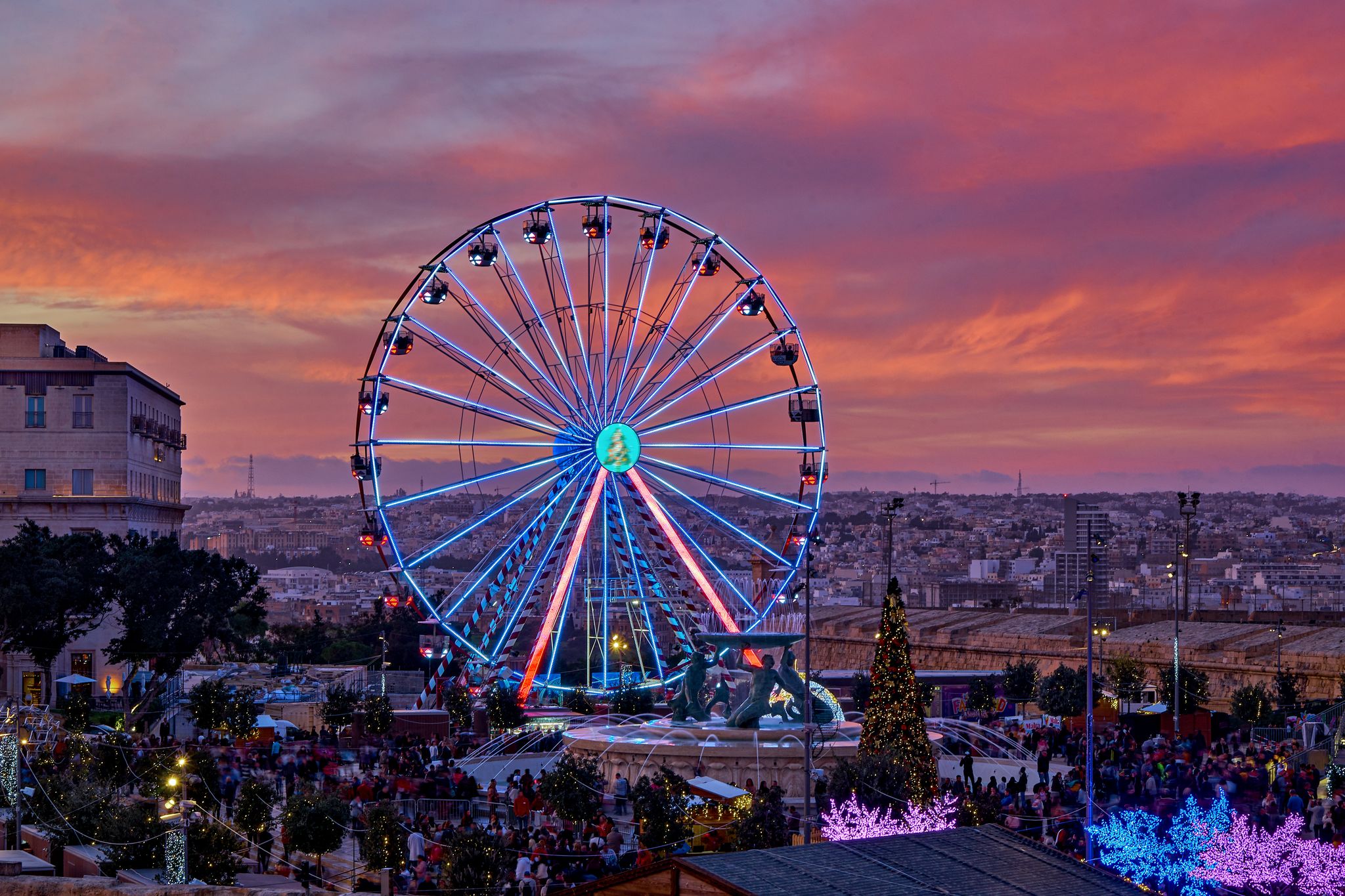
Top Places To Visit in Malta During Winter
Winter is mild and quieter, making it ideal for historical tours in Malta. Top sites include Valletta’s grand fortifications, the historic Three Cities, and the island’s numerous churches and museums. The island of Gozo also offers a peaceful retreat with beautiful winter landscapes.
Must-Attend Events in Malta’s Winter
Christmas and New Year are festive times in Malta, with numerous events, markets, and decorations. Another highlight is the Valletta International Baroque Festival in January, which celebrates baroque music with concerts and performances in historic venues throughout Valletta.
In February, the Malta Marathon attracts global runners, offering scenic routes that showcase the island's landscapes and historic sites. This event includes a full marathon, half marathon, and fun run, promoting health and local culture.
Best Things To See and Do in Malta in Winter
Winter is perfect for cultural exploration and enjoying Malta’s rich history without the summer crowds. It's also a good time to enjoy Malta's local cuisine in cozy restaurants or join a Christmas tour in Valletta. While swimming might be off the table, the mild weather is still suitable for various outdoor activities such as horse riding and hiking.
The Best Month To Visit Malta During Winter
December is the best winter month to visit Malta, particularly for those interested in experiencing the festive season. The Christmas markets, decorations, and events add a magical touch to the island.
Malta Travel Tips with Seasonal Insights
Malta is a vibrant and historic island, perfect for a memorable vacation. However, your trip can be even better if you know a few things before you go.

Language
While English is widely spoken, knowing a few Maltese phrases like "Bongu" (hello), "Grazzi" (thank you), and "Kemm tiswa?" (how much does it cost?) can make your experience richer and more engaging.
In summer, you'll find many locals and tourists alike out and about, so using these phrases in markets or cafes can help break the ice. In winter, when the island is quieter, these small interactions can make a big difference in your connection with locals.
Currency
Malta uses the Euro (EUR), which simplifies transactions for most travelers. When withdrawing money, it's generally better to use ATMs than to exchange currency, as ATM rates tend to be more favorable.
During peak summer months, ATMs in busy tourist areas may run low on cash, so plan ahead if you're visiting popular spots.
ATMs in Malta
ATMs are widely available across Malta, particularly in popular tourist areas, major towns, and near hotels. It's advisable to carry some cash for smaller establishments and markets, although credit and debit cards are widely accepted.
During quieter winter months, rural areas might have fewer ATM options, so it’s wise to withdraw cash while in larger towns.
Getting Around
Public transportation is reliable, with buses serving as the primary mode. Renting a car offers more flexibility, but remember, Malta drives on the left. Be sure to familiarize yourself with local driving rules, such as always wearing seat belts and adhering to speed limits.
Summer brings more traffic, especially around beaches and tourist hotspots, so allow extra time for travel. In the winter, roads can be slick with rain, so cautious driving is advised, particularly along the coast.
Attire
When it comes to attire, casual clothing is acceptable in most places, but modesty is appreciated when visiting churches and religious sites.
In winter, layers are important since churches and older buildings may not have central heating, and it can feel colder indoors.
What To Pack for Malta

Once you’ve chosen the best time to visit Malta, planning for the weather will help you make the most of your Maltese adventure. One indispensable item? A power adapter. Malta’s outlets use type G plugs, and the standard voltage clocks in at 230 V. If your gear isn’t compatible, an adapter will be your lifeline to keep those devices juiced up.
Regardless of the season, it's wise to carry water bottles and sunscreen to protect against harmful UV rays. In terms of clothing, here’s how to adjust for each season's weather:
- Spring: Pack layers, as mornings and evenings can be cool. A light jacket, comfortable shoes, and a hat are essential.
- Summer: Opt for lightweight clothing and comfortable shoes to beat the heat. Sunscreen, hats, and sunglasses are vital to shield you from the sun’s rays. Don't forget a water bottle and a towel for beach trips or picnics.
- Autumn: Similar to spring, layered clothing is key as temperatures can vary. A light rain jacket is useful for occasional showers.
- Winter: Winters are mild but can be windy and rainy. Bring a warm jacket, sweater, waterproof shoes, and layers to stay comfortable. Moisturizers are also recommended to protect against dry skin during the cooler months.
The Best Time To Visit Malta
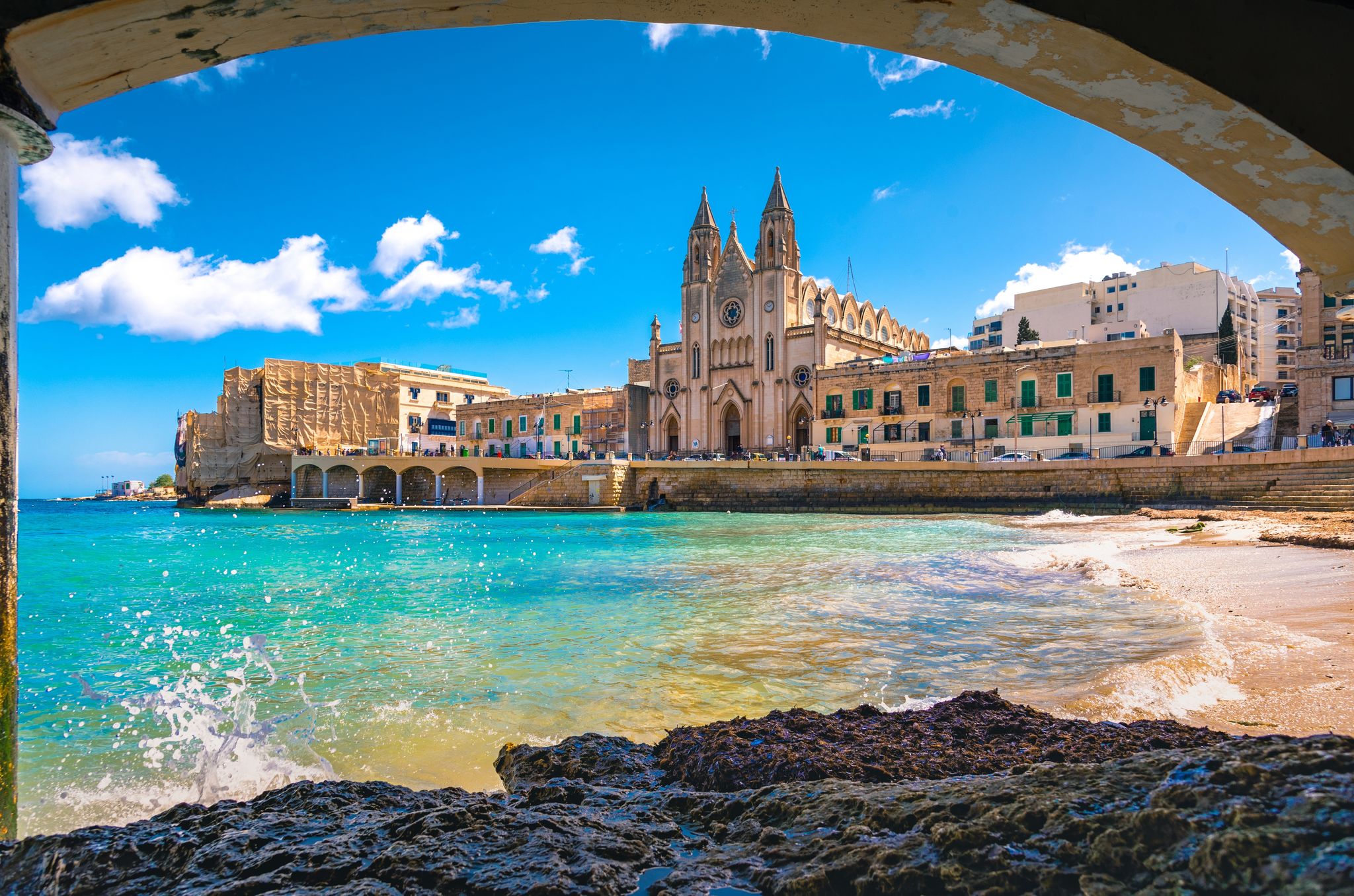
Now that everything has been discussed, determining the best time to visit Malta largely depends on your personal preferences and what you hope to experience during your trip.
If you thrive in vibrant, bustling environments and don't mind the higher prices, the peak season from June to September is ideal. You'll enjoy the longest days, the hottest temperatures, and an array of lively festivals and beach activities. However, be prepared for larger crowds and increased costs.
For those seeking a more balanced experience, the shoulder seasons offer the perfect blend of pleasant weather, fewer tourists, and more affordable prices. Spring and autumn provide a unique charm, allowing you to enjoy city sightseeing tours in Malta comfortably without the intense summer heat or the cooler, rainier conditions of winter.
Winter in Malta, while cooler and less predictable in terms of weather, still holds its own appeal. It’s a peaceful time to visit if you prefer tranquility and don't mind some rainy days. What's more, it's the most budget-friendly season, making it ideal for cost-conscious travelers.
Ultimately, whether you're looking to bask in the summer sun, explore in the mild spring or autumn, or enjoy a quiet winter retreat, Malta has something special to offer year-round. Plan according to your interests and enjoy the rich culture, stunning landscapes, and warm hospitality that Malta has to offer, no matter when you decide to visit.
Dive Deeper Into Malta's Wonders
Now that you know the best time to visit Malta for each part of your trip, it's time to dive into everything this captivating island has to offer. Malta’s stunning landscapes, rich history, and vibrant culture create endless opportunities for exploration and adventure.
For the best experience, consider renting a vehicle for your Maltese journey. This option provides the flexibility to uncover the island’s hidden gems at your own pace. As you plan your stay, choose from the largest selection of accommodations in Malta, ensuring you find the ideal place that suits your style and preferences.
Exploring helpful travel resources and services in Malta will further assist you in planning your trip. Discover the top things to do, along with the best places to stay, so you can be well-situated for your adventures.
To ensure a well-paced itinerary, examine the top travel plans available in the country. This will help guide your journey, allowing you to experience Malta without feeling rushed.
Start crafting your unforgettable adventure today, as this stunning island awaits with countless experiences just waiting to be discovered.
